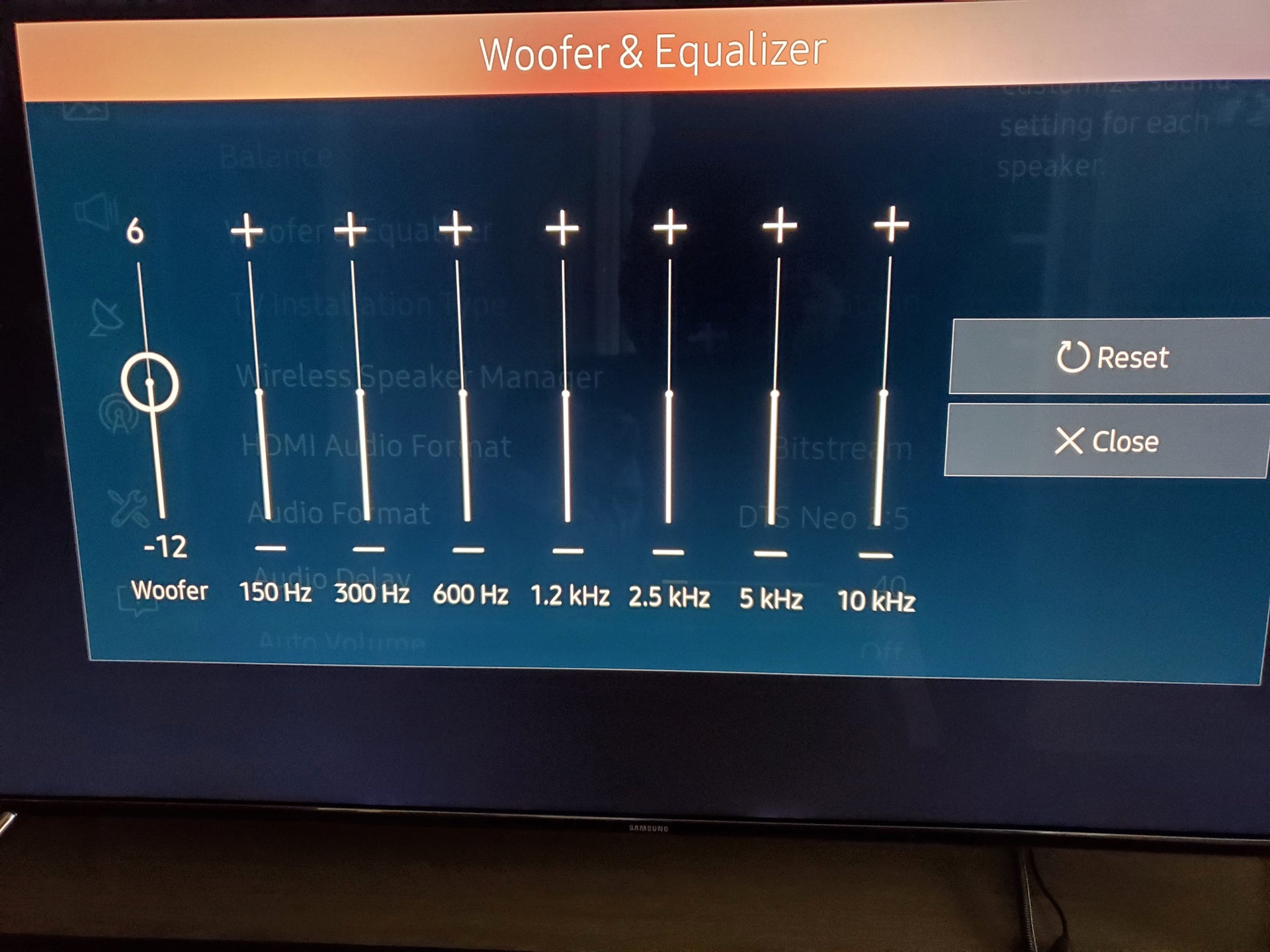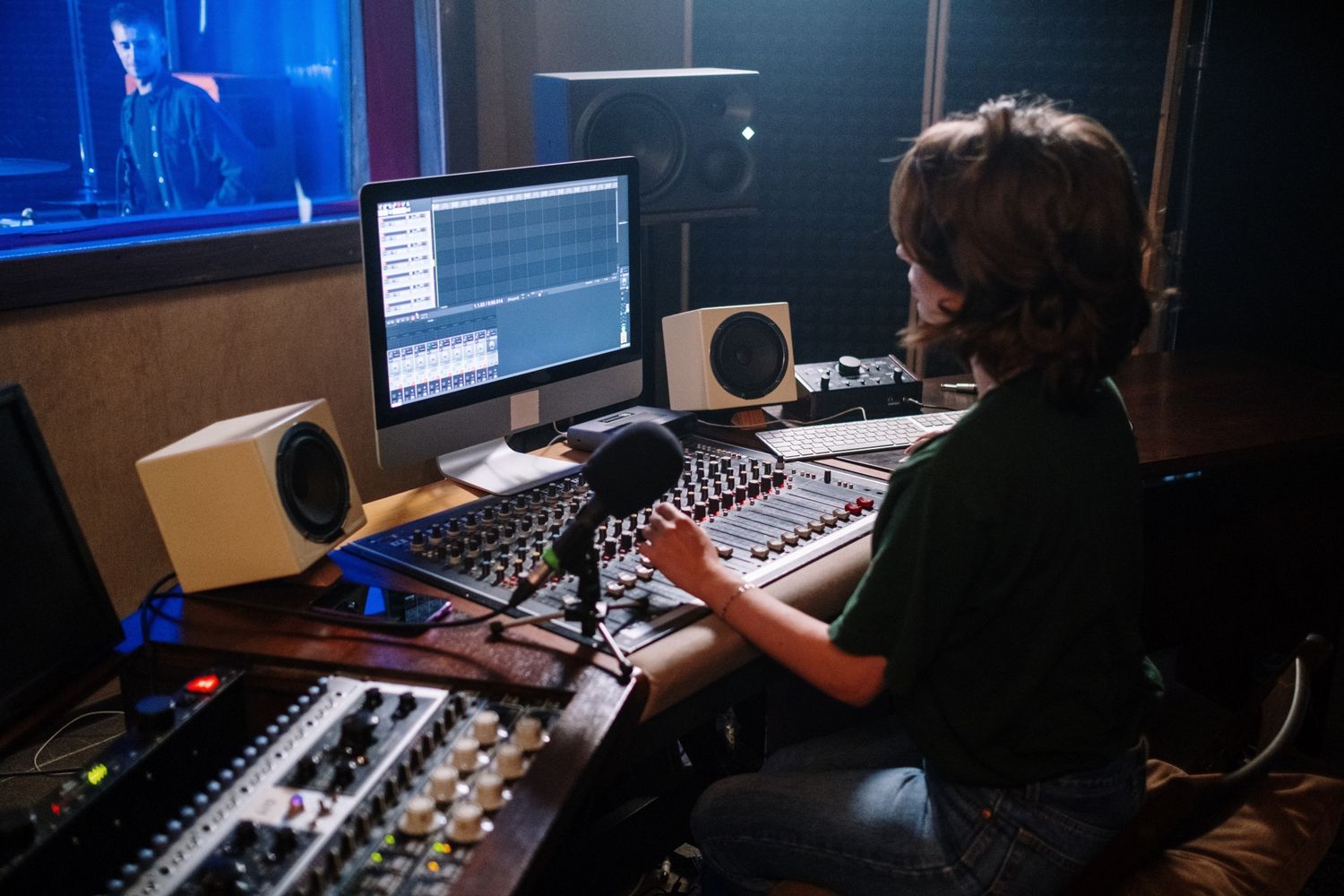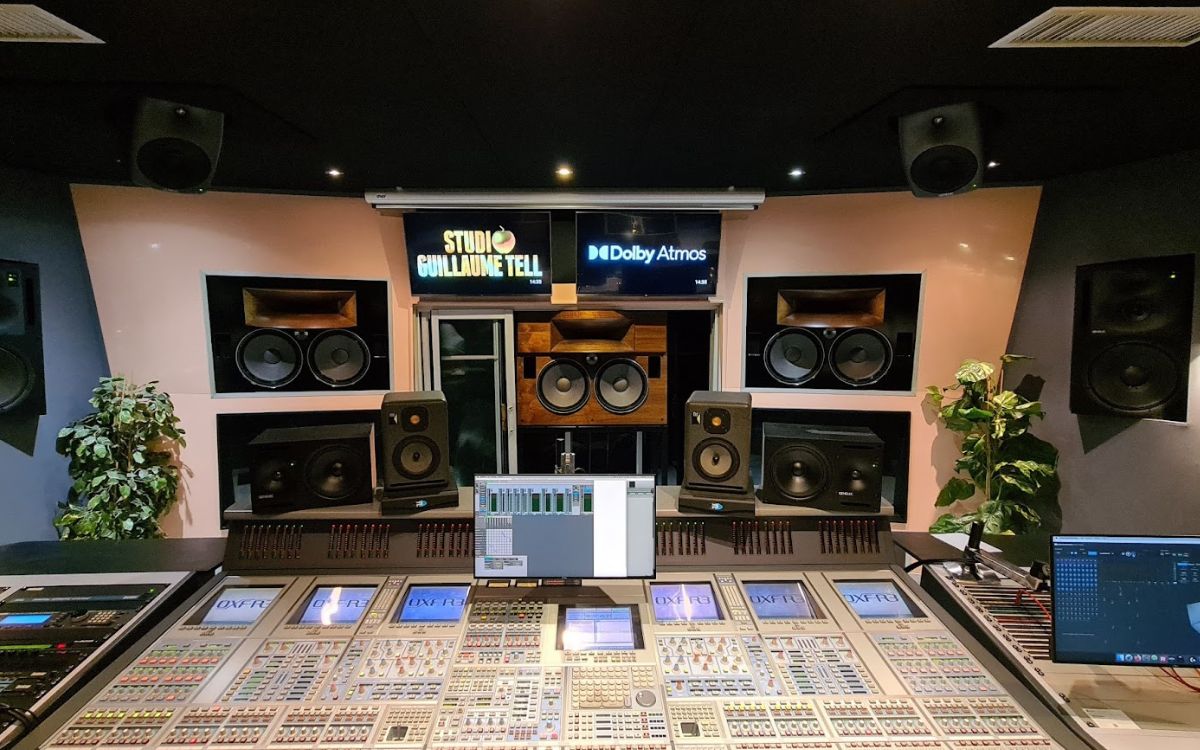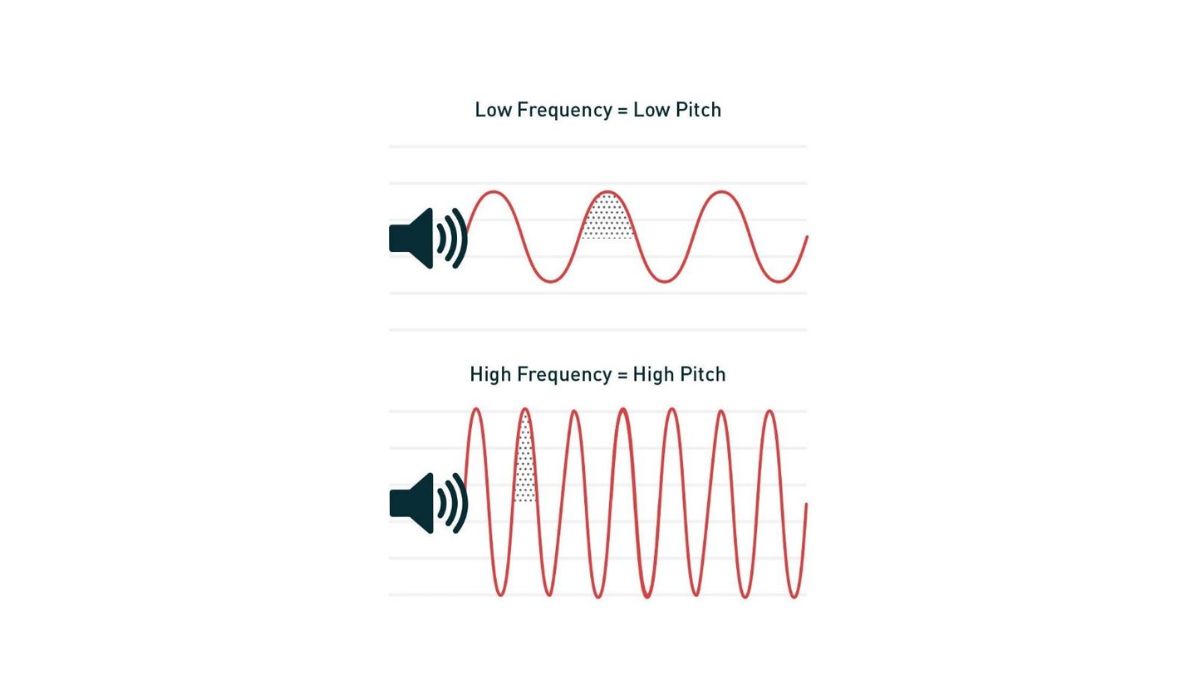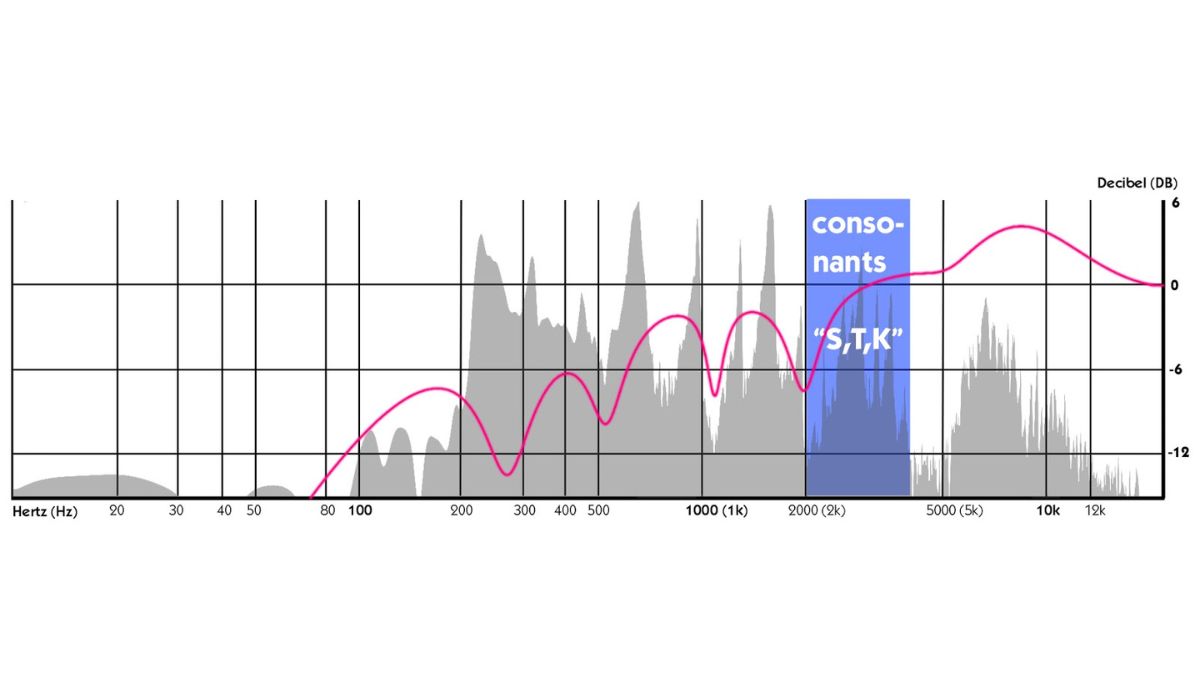Home>Production & Technology>Sound>What Is A Sound Stage
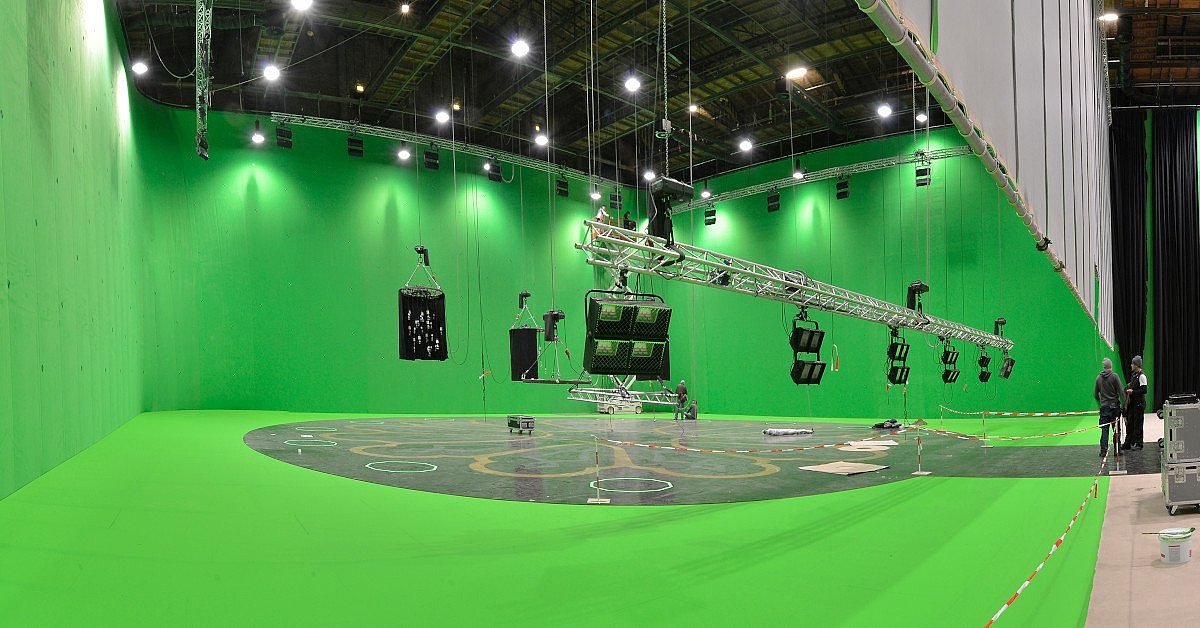

Sound
What Is A Sound Stage
Modified: January 26, 2024
Discover what a sound stage is and how it contributes to the creation of high-quality sound for films, TV shows, and music. Explore the importance of sound in various industries.
(Many of the links in this article redirect to a specific reviewed product. Your purchase of these products through affiliate links helps to generate commission for AudioLover.com, at no extra cost. Learn more)
Table of Contents
Introduction
A sound stage is a specialized facility used in the entertainment industry for film and television production. It provides a controlled environment with versatile features to create realistic and immersive settings for on-screen storytelling. Sound stages are purpose-built buildings that are designed to accommodate various production needs, allowing filmmakers and producers to bring their creative visions to life.
Whether it’s a bustling city street, an enchanting forest, or a futuristic spaceship, sound stages offer the flexibility to recreate any location or scenario. From large-scale blockbuster films to small independent productions, sound stages provide an essential space for capturing high-quality audio and visually stunning scenes.
Sound stages have the advantage of being completely customizable, allowing production teams to construct and modify sets according to their specific requirements. The controlled environment also eliminates unwanted background noise and provides better control over lighting conditions, resulting in a more professional and polished final product. Additionally, sound stages offer the convenience of having all the necessary production facilities and equipment in one location, making the filmmaking process more efficient and streamlined.
Throughout this article, we will explore the definition, purpose, function, design, and rental aspects of sound stages. We will also delve into the various types of sound stages and highlight some examples of famous sound stages that have played a significant role in the history of the entertainment industry.
Definition of a Sound Stage
A sound stage is a large indoor space specifically designed for film and television production. It acts as a blank canvas where filmmakers can construct and create realistic sets or backgrounds for their productions. Sound stages are equipped with state-of-the-art soundproofing, lighting systems, and other technical features to ensure optimal conditions for filming.
Sound stages are typically soundproofed to prevent unwanted external noises from interfering with the recording process. This is achieved through the use of specialized construction techniques, such as double walls, acoustic insulation, and heavy soundproofing materials. The soundproofing allows for precise audio capture and the ability to control every aspect of the sound during filming.
One of the key features of a sound stage is its size. Sound stages are usually large, open spaces that can accommodate large sets and equipment. The size of a sound stage can vary, with some stages spanning several thousand square feet. This spaciousness allows for flexibility in production design, giving filmmakers the freedom to create expansive or intricate sets to bring their vision to life.
Another essential aspect of a sound stage is its lighting capabilities. Sound stages are equipped with lighting grids or rigging systems that provide a variety of lighting options. This allows filmmakers to manipulate and control the illumination of the set to enhance the visual aesthetic and create the desired atmosphere for their scenes.
Additionally, sound stages often have built-in infrastructure for electrical power distribution, ventilation systems, and support spaces like makeup rooms, dressing rooms, production offices, and storage areas. These facilities provide a convenient and efficient working environment for the cast and crew.
In summary, a sound stage is a purpose-built, soundproofed facility that offers a controlled and versatile space for film and television productions. It provides filmmakers with the freedom to create and capture their desired settings, while offering a range of technical features to ensure the optimal conditions for filming and recording.
Purpose and Function of a Sound Stage
The purpose of a sound stage is to provide a controlled environment for film and television production. It serves as a versatile space where filmmakers can create realistic and immersive settings, ensuring the highest quality audio and visual experience for viewers. The function of a sound stage goes beyond just being a blank canvas; it offers numerous advantages and benefits throughout the production process.
One of the primary functions of a sound stage is to facilitate the construction of custom-designed sets. Filmmakers have the flexibility to create any location or scenario, from elaborate period pieces to futuristic landscapes. The controlled environment of a sound stage allows for meticulous attention to detail, ensuring that every aspect of the set is tailored to the specific requirements of the production. This creates a sense of authenticity and realism in the final product.
Another important function of a sound stage is its ability to control lighting conditions. Lighting plays a crucial role in setting the mood and atmosphere of a scene. Sound stages are equipped with lighting grids or rigging systems, which provide a range of lighting options. Filmmakers can manipulate and adjust the lighting to achieve the desired effect, enhancing the visual storytelling and creating dramatic impact.
A significant advantage of using a sound stage is the complete control over audio capture. The soundproofed environment eliminates external noise interference, ensuring crystal-clear audio quality. This is particularly important when capturing dialogue, as any background noise can be distracting and affect the overall production value. Sound stages also allow for the use of boom microphones and other equipment, optimizing audio recording and minimizing post-production work.
The convenience and efficiency of a sound stage cannot be overstated. Unlike shooting on location, a sound stage offers a centralized space that houses all the necessary production facilities and equipment. This includes dressing rooms, green rooms, makeup areas, production offices, and storage spaces. Having everything in one location streamlines the filmmaking process, saving time and resources.
Moreover, sound stages provide a controlled environment for shooting complex action sequences, stunts, or visual effects. Safety measures can be implemented, and specialized equipment can be used without the limitations and potential hazards of shooting on location. This ensures the well-being of the cast and crew while achieving the desired visual impact.
In summary, the purpose and function of a sound stage are to provide a controlled and versatile space for film and television production. It allows for the construction of customized sets, control over lighting conditions, precise audio capture, and centralized facilities. Sound stages offer convenience, efficiency, and the ability to create visually stunning and immersive experiences for viewers.
Sound Stage Design and Construction
The design and construction of a sound stage are crucial in ensuring optimal conditions for filming and recording. From the layout and layout to the materials and technologies used, every aspect is carefully considered to create a functional and versatile space.
One of the essential elements of sound stage design is the consideration given to acoustics. Sound stages are built with soundproofing in mind, as it is vital to eliminate any external noise interference during filming. This is achieved through the use of specialized materials, such as acoustic insulation, double walls, and heavy doors. The goal is to create an environment where sound can be controlled and captured accurately, without any disturbances.
Additionally, the size and layout of a sound stage play a significant role in its design. Sound stages are typically spacious, offering enough room for constructing large sets and accommodating equipment. The layout is optimized to allow for efficient workflow, with designated spaces for dressing rooms, makeup areas, production offices, and storage facilities. The placement of lighting grids, rigging systems, and other technical features is also carefully considered to provide the best possible shooting conditions.
The choice of lighting systems and equipment is another crucial aspect of sound stage design. Lighting grids or rigging systems are incorporated into the stage’s infrastructure, allowing flexibility in setting up various lighting configurations. This enables filmmakers to achieve precise control over the illumination of the set, creating the desired atmosphere and enhancing the visual aesthetics of the production.
Sound stages are constructed using durable and sturdy materials to ensure longevity and safety. The walls and floors are designed to minimize vibrations and echoes, contributing to optimal sound recording conditions. The construction also takes into account the installation of electrical power distribution systems, ventilation, and HVAC systems to provide a comfortable working environment for the cast and crew.
Modern sound stage construction employs technologies and advancements that enhance the overall production experience. This may include advanced soundproofing techniques, energy-efficient lighting systems, and integrated control systems for lighting and sound. These technologies aim to streamline operations, improve productivity, and enhance the quality of the final product.
In summary, sound stage design and construction are based on careful consideration of acoustics, layout, lighting, materials, and technological advancements. The goal is to create a space that offers optimal soundproofing, efficient workflows, versatile lighting options, and a safe and comfortable environment for filming. The design and construction elements work together to provide filmmakers with a controlled and adaptable space for bringing their creative visions to life.
Types of Sound Stages
Sound stages come in various types, each designed to cater to specific production needs and requirements. The type of sound stage chosen depends on factors such as budget, scale of production, and desired shooting conditions. Here are some common types of sound stages:
- Large Sound Stages: These are spacious sound stages typically used for big-budget film productions or television shows that require expansive sets. Large sound stages provide ample space for building elaborate sets, constructing multiple scenes, and accommodating a large crew and equipment.
- Small Sound Stages: Smaller sound stages are popular choices for independent filmmakers or productions with limited budgets. These stages offer more intimate spaces and are suitable for small-scale productions, such as commercials, music videos, or web series.
- Green Screen Stages: Also known as chroma key stages, green screen stages are purpose-built for shooting scenes that require digital visual effects or background replacement. The entire stage is covered with a green screen, allowing visual effects artists to add virtual backgrounds or composite footage during post-production.
- Mock-up Stages: Mock-up stages are designed to replicate specific locations or environments with high precision. They are commonly used for creating interior sets of buildings, vehicles, or other enclosed spaces. These stages provide full control over lighting, acoustics, and set design, resulting in realistic and detailed representations of real-world settings.
- Water Tank Stages: Water tank stages are specialized sound stages equipped with pools or tanks for filming underwater scenes or simulating water-based environments. These stages are built with waterproofing measures and adjustable platforms to create the illusion of any water depth required for the production.
- Virtual Reality (VR) Stages: With the rise of virtual reality technology, VR stages have emerged to accommodate the filming of immersive 360-degree content. These stages use specialized camera setups and green screen or LED screen backdrops to capture footage that can be experienced in virtual reality headsets.
Each type of sound stage offers unique features and capabilities to suit different production needs. Filmmakers and production companies can choose the most appropriate type of sound stage based on the specific requirements of their project, ensuring that they have the necessary space and resources to bring their creative visions to life.
Equipment and Facilities in a Sound Stage
A sound stage is equipped with a wide range of equipment and facilities to support the needs of film and television production. These resources ensure a smooth and efficient workflow, providing filmmakers and crew members with everything they need on-site.
Lighting Equipment: Sound stages are equipped with lighting grids or rigging systems that enable filmmakers to set up and control various lighting configurations. This includes spotlights, floodlights, diffusers, and other lighting accessories to achieve the desired visual effects.
Camera Equipment: Sound stages often have a variety of camera equipment available for use, including high-quality cameras, lenses, tripods, dollies, and stabilizers. These tools allow filmmakers to capture crisp, professional-grade footage.
Sound Equipment: A sound stage is equipped with specialized sound equipment, such as boom microphones, wireless audio systems, and audio mixers. These tools ensure clear and high-quality audio capture during filming.
Green Rooms and Dressing Rooms: Green rooms and dressing rooms provide comfortable spaces for actors and artists to prepare and relax during breaks. These rooms are equipped with amenities like mirrors, makeup stations, seating areas, and wardrobe racks.
Production Offices: Sound stages often feature production offices where production teams can plan, organize, and manage various aspects of the production. These spaces are equipped with desks, computers, printers, and other essential office equipment.
Makeup and Styling Areas: Sound stages have dedicated spaces for makeup artists and stylists to work their magic. These areas are equipped with makeup stations, mirrors, lighting, and storage for beauty and hairstyling products.
Storage Areas: Sound stages include storage areas where props, set pieces, and equipment can be safely stored between shoots. These spaces are organized and secure, allowing easy access to the necessary materials when needed.
Technical Control Rooms: Sound stages may have technical control rooms that house the equipment and systems necessary for controlling lighting, sound, and other technical aspects of the production. These rooms are equipped with monitors, control panels, and other specialized equipment.
Craft Services: Craft services areas provide food and refreshments for the cast and crew during filming breaks. These areas may include a catering setup with a variety of food options to keep everyone fueled and hydrated.
Overall, the equipment and facilities in a sound stage are designed to meet the diverse needs of a production. From lighting and sound equipment to specialized areas for makeup, styling, and production offices, sound stages provide a convenient and well-equipped space for filmmakers to bring their creative visions to life.
Sound Stage Rental and Usage
Renting a sound stage is a common practice in the film and television industry, as it provides filmmakers with a controlled environment and essential facilities for their productions. Understanding the rental process and how to effectively utilize a sound stage can greatly contribute to a successful production.
Locating a Suitable Sound Stage: The first step in renting a sound stage is to find a suitable facility that meets the specific needs of the production. Factors to consider include the size of the stage, available equipment, location, and budget.
Booking the Sound Stage: Once a suitable sound stage is identified, the next step is to book the facility. This involves contacting the sound stage management, discussing the production requirements, and finalizing the rental agreement, including the dates and duration of the rental.
Coordinating with Sound Stage Management: It is important to establish good communication and coordination with the sound stage management team. They will provide guidance and assistance in understanding the stage’s specifications, facilities, and any additional services they offer.
Customizing the Set: Sound stages offer the advantage of allowing filmmakers to build custom sets that suit the specific requirements of the production. This involves working closely with production designers, carpenters, and other professionals to create the desired set design and aesthetic.
Set Dressing and Props: Sound stages can provide storage areas for props and set dressing materials. It is important to plan and coordinate the sourcing, transport, and setup of props and set pieces to ensure they are available and properly utilized during filming.
Lighting and Sound Setup: Sound stages come equipped with lighting grids and rigging systems, but it is essential to work with a knowledgeable team to properly set up the lighting and sound equipment. This ensures the desired visual and audio effects are achieved, and that technical aspects are effectively managed.
Maximizing Efficiency: During the rental period, it is crucial to optimize the use of the sound stage and its facilities. This includes creating a detailed shooting schedule, coordinating crew movements, and efficiently managing the production workflow to make the most of the rental time.
Cleanup and Restoration: At the end of the rental period, it is important to leave the sound stage in the same condition as when it was rented. This typically involves restoring the set to its original state, cleaning the facilities, and returning any equipment or props that were provided by the sound stage.
Sound stages offer filmmakers a controlled and versatile space to bring their creative visions to life. By understanding the rental process, effectively utilizing the facilities, and coordinating with the sound stage management, filmmakers can maximize the potential of a sound stage to create high-quality productions.
Examples of Famous Sound Stages
Throughout the history of the entertainment industry, there have been several iconic sound stages that have played a significant role in shaping film and television productions. These stages have become synonymous with creativity, innovation, and the magic of filmmaking. Here are a few examples of famous sound stages:
- Stages 30 and 31 – Warner Bros. Studio: Located in Burbank, California, Warner Bros. Studio is home to famous sound stages that have hosted numerous blockbuster films and TV shows. Stages 30 and 31, in particular, have seen the production of iconic films like “Casablanca,” “The Matrix,” and “Batman Begins.”
- Stage 24 – Paramount Studios: Situated in Hollywood, California, Paramount Studios is one of the oldest and most renowned film production studios. Stage 24, known as the “Paramount Theatre,” has hosted productions such as “Sunset Boulevard,” “Grease,” and “Star Trek: The Original Series.”
- Stage 16 – Universal Studios Hollywood: Universal Studios Hollywood boasts a vast array of sound stages, but Stage 16 stands out as one of the most notable. It has been the setting for iconic films like “Psycho,” “Back to the Future,” and “Jurassic Park.”
- Pinewood Studios – United Kingdom: Pinewood Studios, located just outside London, England, is renowned for its state-of-the-art sound stages that have hosted countless blockbuster films. Stage 007, in particular, gained fame as the largest sound stage in Europe and has been used for the production of various James Bond films.
- Fox Bungalow 16 – 20th Century Fox Studios: This sound stage, situated in Los Angeles, California, has been the birthplace of numerous iconic films over the years. Notable productions include “The Sound of Music,” “Aliens,” and “Titanic.”
These examples only scratch the surface of the famous and influential sound stages that have contributed to the history and success of the film and television industry. Each stage has its own unique legacy and has played a significant role in bringing timeless stories to the big screen.
Conclusion
Sound stages are essential spaces in the world of film and television production. They provide a controlled environment where filmmakers can bring their creative visions to life, allowing for the construction of customized sets, precise lighting control, and optimal sound recording conditions. Sound stages offer a range of facilities and equipment, including lighting grids, dressing rooms, production offices, and specialized technical control rooms, to support the production process.
With various types of sound stages available, filmmakers can choose the one that best suits their production needs, whether it be a large stage for big-budget productions, a green screen stage for visual effects, or a mock-up stage for realistic set reproductions. Sound stages provide convenience, efficiency, and safety compared to shooting on location, allowing filmmakers to focus on the creative process without limitations.
Throughout history, famous sound stages like those of Warner Bros., Paramount Studios, and Pinewood Studios have become iconic symbols of the film industry. These stages have hosted legendary productions, contributing to the magic and allure of cinema.
In conclusion, sound stages are integral to the filmmaking process, offering a versatile, controlled, and customizable environment for creating stunning visuals and capturing high-quality audio. They provide a hub of creativity and innovation, enabling filmmakers to turn their imaginative concepts into captivating on-screen experiences. Whether for big-budget blockbusters or small-scale independent projects, sound stages have played a crucial role in bringing stories to life and entertaining audiences worldwide.



